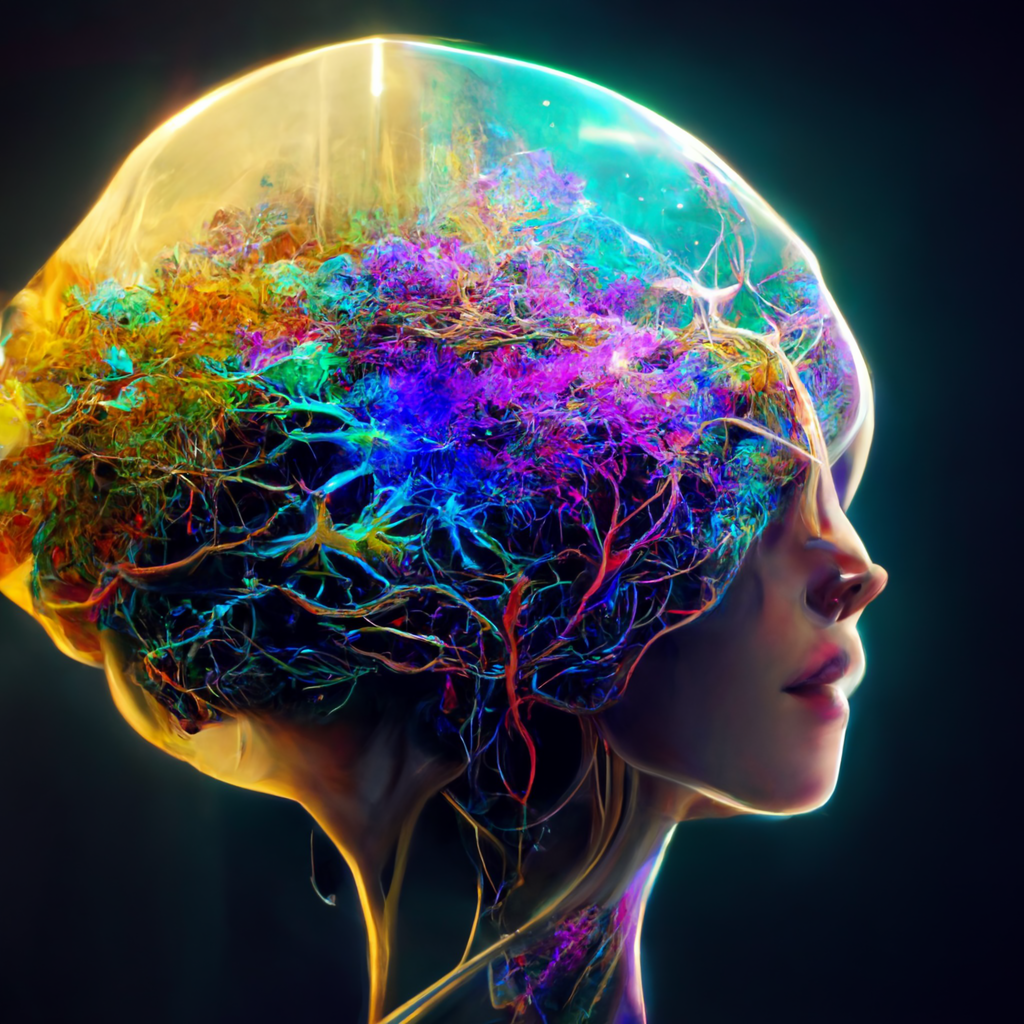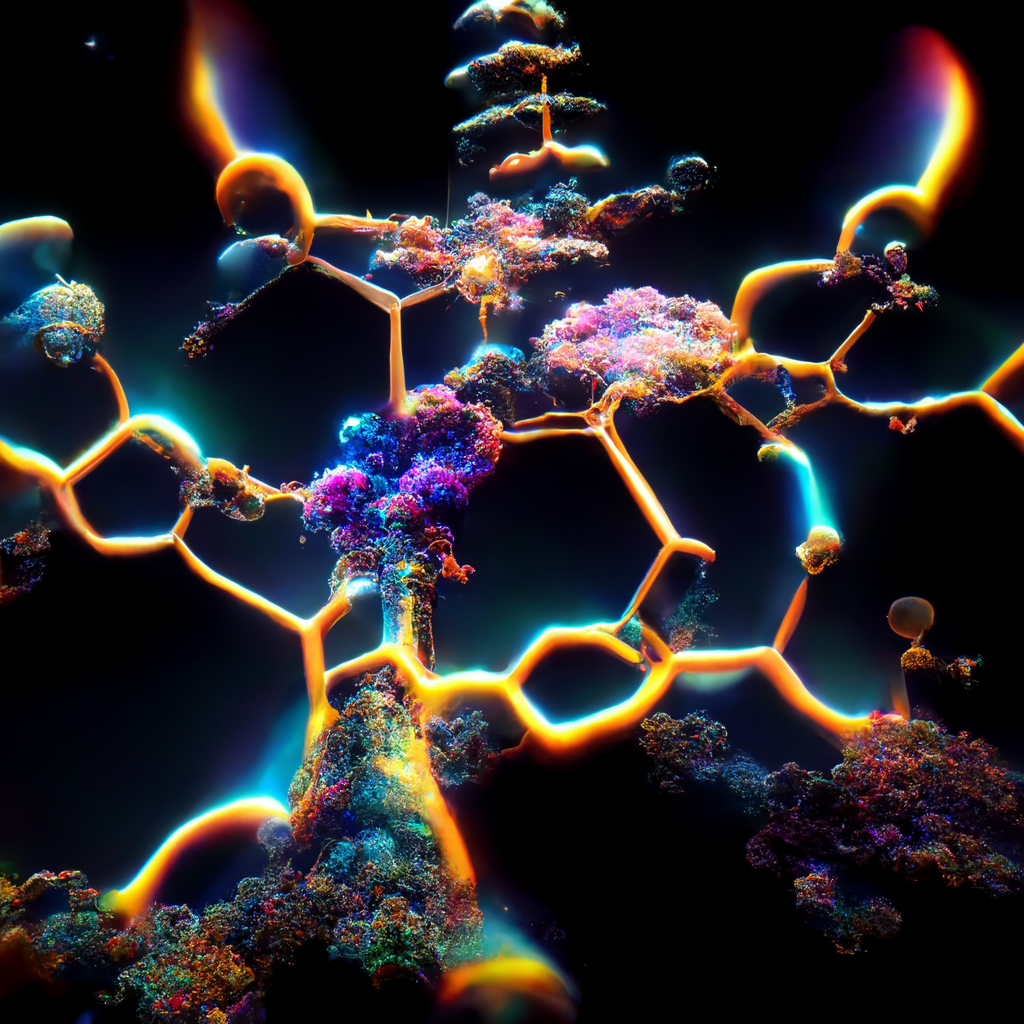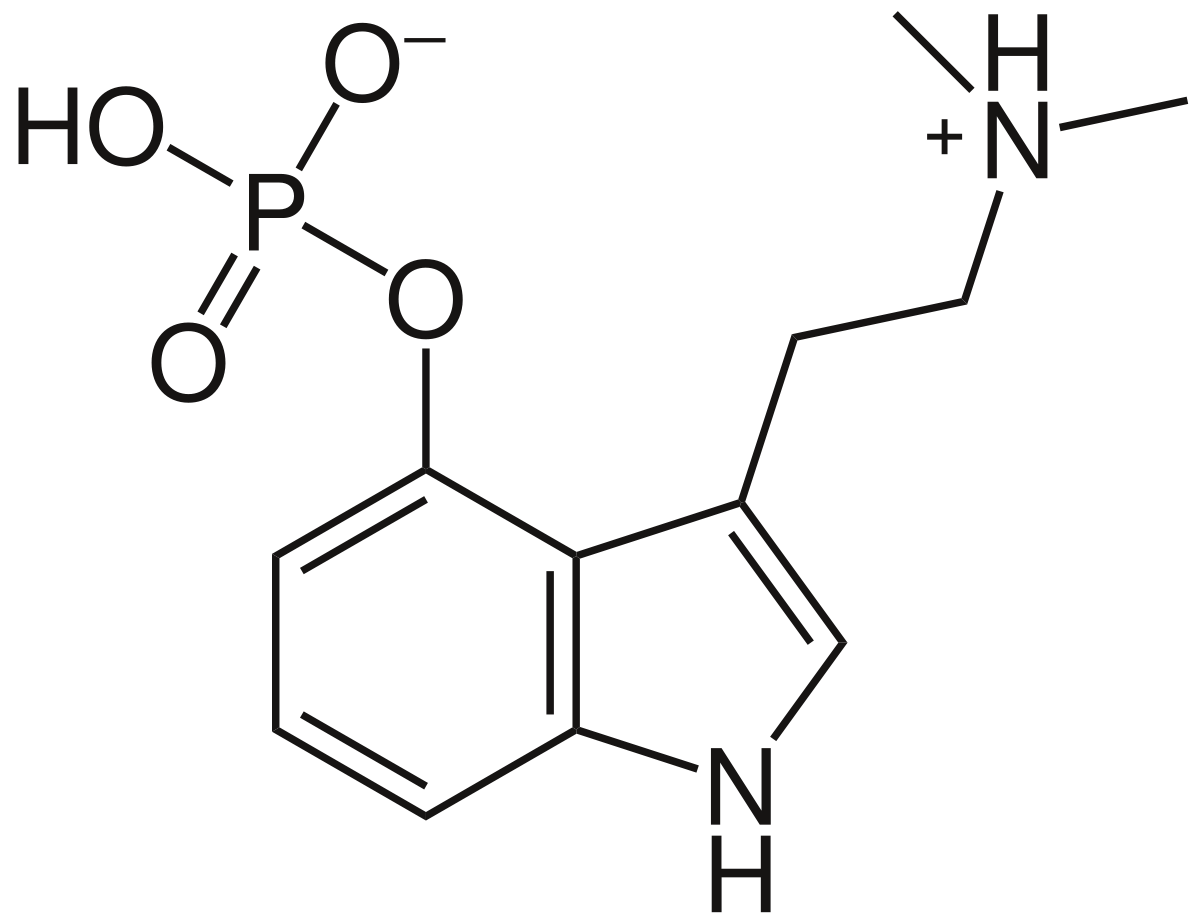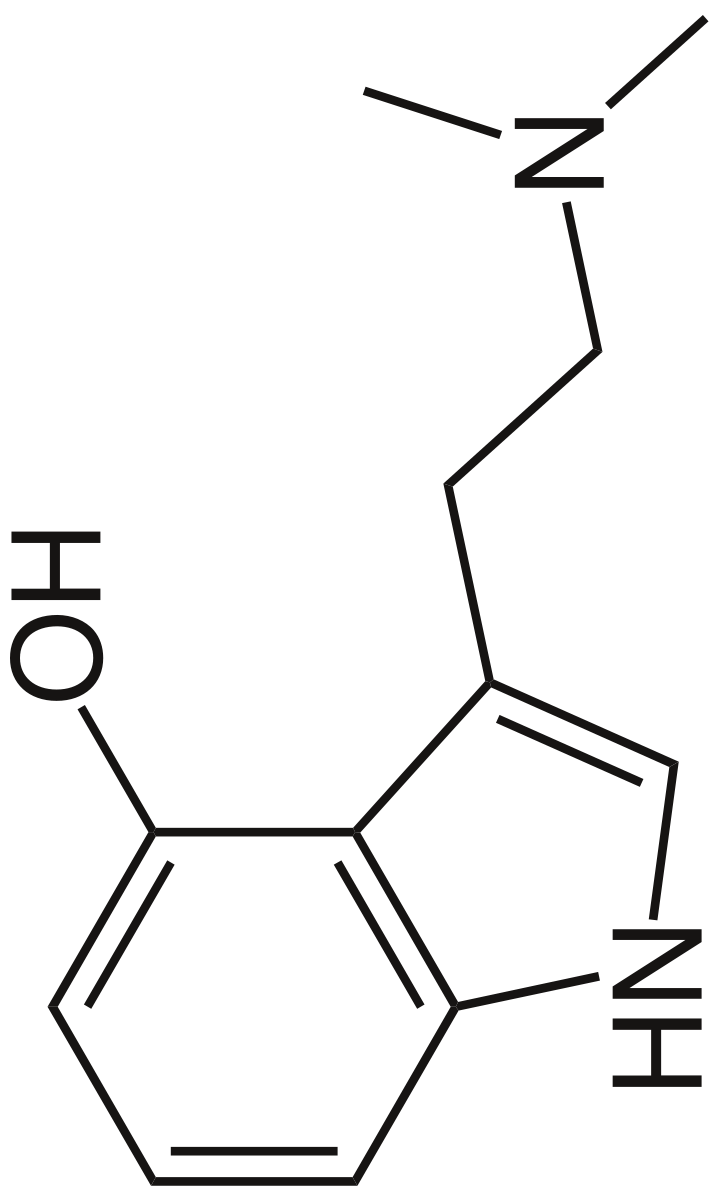How psilocybin works inside the brain through the lens of neuroscience
These are some of the observations neuroscientists, chemists, and psychologists have been able to observe on how psilocybin interacts with the brain and body.
What is psilocybin?
Psilocybin (PY, 4-phosphoryloxy-N,N-dimethyltryptamine) is the main psychoactive ingredient in hallucinogenic mushrooms, most commonly found in the genus of fungi known as Psilocybe. Psilocybin is an indolealkylamine which means that it has a very similar structure to serotonin.
What is serotonin?
Serotonin (5-hydroxytryptamine, 5-HT) is a neurotransmitter which acts through its receptors (5-HTRs) to shape our brain networks during development. It is also one of the chief modulators for essential functions in mature brains. These functions include mood, perception, reward, anger, aggression, appetite, memory, sexuality, and attention, among others. There is hardly any human behavior that is not in some way regulated by serotonin.
Serotonin is able to effect this change by interacting with 14 different serotonin receptors inside the body.
A serotonin receptor lives on the exterior of a cell (ie. axon, dendrite, cell wall) and gets activated when serotonin bumps into it. This activation will either excite or inhibit another chemical or electrical reaction inside the cell. These reactions are still being discovered, but some of the activations could be release of another chemical like glutamate, GABA, or dopamine. They could also inhibit those chemicals from being released. These excitations and inhibitions are what regulate our mood, our memories, our emotions, our perception of reality.
There is still is a lot to be discovered about the mechanics of what happens when serotonin connects with these different receptors and the specifics of those reactions. However, here is what we do know.
The same serotonin receptor can be found in many different parts of the brain and many different organs. Thereby, targeting one serotonin receptor influences many different reactions in the CNS (Central Nervous System) and the PNS (Peripheral Nervous System) simultaneously.
We are able to observe that some brain areas are more affected by certain serotonin receptors, and other brain areas affected by other serotonin receptors.
We are able to see an increase or decrease in activity in certain areas of the brain after targeting serotonin receptors.
We are able to tie those changes in activity to observable changes in human behavior and physiology.
It is important to note, that outside of the brain, serotonin receptors also play a role in the vascular system, cardiac system, respiratory system, metabolic system, gastrointestinal system, and reproductive systems.
An interesting effect of serotonin (5-HT) on social behavior of the desert locust is its ability to induce a switch from solitary to gregarious in just a few hours with the release of serotonin in the body. (Schistocerca gregaria) (Rogers & Ott, 2014).
The complexity of these serotonin receptors ties into the complexity of psilocybin.
After ingesting psilocybin, what happens?
Once a human ingests psilocybin, the liver will metabolize psilocybin into psilocin through dephosphorylation. The remaining metabolic journey of psilocybin is still not completely figured out. However scientists have been able to observe what happens to psilocin. Psilocin swims through the blood-brain barrier and begins connecting with receptors.
After psilocybin converts to psilocin and enters the brain, what happens?
Because of its’ similar structure to serotonin, psilocin seeks out many serotonin receptors, and has shown an especially high affinity with one known as 2A (5-HT2Ar). Psilocin also exhibits an ability to connect with serotonin receptors (5-HT1A/B/D/E, 2B, 2C,3 5, 6, 7). This article will will mostly focus on psilocin’s connection with the 1A and 2A receptor. While it will leave us with an incomplete picture, these two receptors have been noted to be significant factors in both the psychedelic and psychological impact on human beings.
The serotonin receptors psilocin activates
-
49.0 Ki(nM)
-
219.6 Ki(nM)
-
36.4 Ki(nM)
-
52.2 Ki(nM)
-
107.2 Ki(nM)
-
4.6 Ki(nM)
-
higher doses of particular psychedelics may lead to activation of the 5-HT2C receptor, which often functionally opposes the effects of 5-HT2A receptor activation.
-
>10,000 Ki(nM)
-
83.7 Ki(nM)
-
57.0 Ki(nM)
-
3.5 Ki(nM)
What is the function of the 5-HT1A receptor inside the brain?
The 5-HT1A receptor is located heavily on neurons in a part of the brainstem known as the raphe nuclei. This is where all of the body’s serotonin is created and from here, serotonin (5-HT) will be sent to other parts of the brain and the body. The 5-HT1A receptors in the raphe nuclei area act as presynaptic autoreceptors on serotonergic neurons which basically means that as these cells create and send out serotonin, the autoreceptor will receive the message that serotonin has been created, and tell itself to send out less serotonin. This is to try and find homeostasis in the body. It’s like our brain’s natural checks and balance system.
The 5-HT1A receptor is also very densely located in the limbic system which are parts of the brain that activate when we have strong behavioral and emotional responses, especially when it comes to survival. More technically, these 5-HT1A receptors in the limbic system are slightly different than the receptors in the raphe nuclei because they are postsynaptic receptors. These postsynaptic receptors are located in the hippocampus, septum, amygdala, hypothalamus, cortex, and dorsal horn. When these receptors get activated, they can function as both “on” and “off” switches for the secretion of hormones or other neurotransmitters like cortisol, more serotonin, dopamine, oxytocin, growth hormone, endorphins among many others.
The hippocampus is associated with memory consolidation and memory processing whereas the amygdala is associated with fear. When the 5-HT1A receptors are activated in these locations, these receptors act as inhibitors rather than as excitatory neurons meaning they close or turn off the chemical and electrical signaling in these locations. So when a lot of these 5-HT1A receptors are activated in these brain areas associated with memory and fear, we see a strong behavioral decrease in stress and anxiety among humans and rats in clinical studies since the part of the brain that processes emotional memories and fear is “calmed” down.
It is important to note that the 5-HT1A receptor can have opposite effects depending on where it is expressed. This gets a little technical, but should highlight some of the complexities about these receptors in the brain. A 5-HT1A receptor can activate an extracellular signal-Regulated Kinase (ERK)1/2 in the hypothalamus in a Calmodulin (CaM)-dependent manner, similar to what is observed in heterologous systems (Della Rocca et al., 1999), whereas as they inhibit ERK1/2 phosphorylation in the hippocampus (Crane et al., 2007)
A lot of the SSRI’s (common antidepressants) in the market will target this 5-HT1A receptor. When an SSRI clings onto a receptor, this allows serotonin to float between neurons longer and more signals get fired. The way these signals are programmed in the hippocampus and the amygdala is to inhibit action. This decreases “emotional memories” and “fear” and from a psychological level, it could be hypothesized that mentally dwelling in these emotional states is one of the contributing factors to depression and anxiety. But what also happens is the 5-HT1A receptors in the raphe nuclei will be activated causing less serotonin to be created. Fortunately, these desensitize rather quickly and within a couple of weeks will start producing serotonin again. That’s when the impact of SSRI’s will be most prominent. It should be noted most SSRI’s take a couple of weeks to start working.
It is important to note that selective 5-HT1A receptor agonists are not hallucinogenic on their own; however, they may play a role in influencing the subtleties of the psychedelic experience. The inhibitory effects seen in the raphe nuclei may have implications as to why psilocin seemingly breaks down the usual regulation of neural communication, disrupting connections between some parts of the brain while providing other parts of the brain that have previously never been communicative an opportunity to “talk”. This effect is sometimes described as a pharmacophysiological interaction
Does psilocin interact with the 5-HT1A receptor?
While most of the clinical studies are focused on how psilocin interacts with the 5-HT2A receptor because that’s the receptor most closely associated with the psychedelic experience, psilocin also interacts with these 5HT1A receptors. It’s part of the reason that those who take antidepressants will have weakened experiences with psychedelics because they are targeting some of the same receptors inside the brain and they end up competing. Psilocin is 4−5 times as potent at the presynaptic sites when compared to postsynaptic sites. This preference is due to the large 5-HT1A receptor reserve present on serotonergic raphe cell bodies. When psilocin binds to dorphe ralphe nucleus presynaptic 5-HT1A receptors, it preferentially dampens dorphe ralphe nucleus effects, while leaving downstream cells unaffected and enhancing sympathetic activity associated with the locus coeruleus. The locus coeruleus sends out norepinephrine to the rest of the body which increases alertness, arousal, and attention in the body.
Does that mean that psychedelics act the same way that SSRI’s do?
In targeting the 5-HT1A receptor they are both targeting a specific set of serotonin receptors responsible for many tasks in the brain and the body, two of the most important ones being the production of additional serotonin and the blocking of activity in the hippocampus and the amygdala.
It is important to note that selective 5-HT1A receptor agonists are not hallucinogenic on their own; however, they may play a role in influencing the subtleties of the psychedelic experience. The inhibitory effects seen in the DRN may have implications as to why psilocin seemingly breaks down the usual regulation of neural communication, disrupting connections between some parts of the brain while providing other parts of the brain that have previously never been communicative an opportunity to “talk”. This effect is sometimes described as a pharmacophysiological interaction
The magic of the 5-HT2A receptor
The 5-HT2A receptor is the most abundant serotonin receptor in the cortex. In humans, the density of 5-HT2AR expression is especially dense in high-level associative cortex – such as regions belonging to the Default Mode Network. The Default Mode Network is a network of areas inside the brain that lights up during self-directed thought or introspection. It is a part of the brain that we use to create our own sense of identity. These areas are heavily involved with cognitive function and social interactions. Several studies have shown dysfunction in these receptors for individuals with disorders like schizophrenia, obsessive compulsive disorder, and depression.
In brain scans of the individuals with these disorders, there are two interesting findings. One, there is a lot of modular activity between the 3 main networks in the brain; the Default Mode Network, the Executive Network, and the Salience Network- meaning these areas work independently of each other. They also linked excessive engagement of Default Mode Network functioning with depressive symptomatology. Basically, in cases of depression, there is a separation in brain processes and a larger amount of time spent in the default mode network thinking about self.
There is a large density of 5-HT2A receptors in the brain which closely resembles a map where the Default Mode Network, Executive Network, and Salience Network will connect with each other. As the 2A receptor is activated, there is a highly functional connectivity between these areas. All of a sudden instead of this modular brain that is working inside specific patterns, you see a broadening of the states of the brain and a more holistic global energy landscape. By activating this connectivity between these networks, and disintegrating old patterns, this spontaneous neuronal activity is proving to lead to significant improvements in patients suffering from depression and addiction.
“5-HT2Ar signaling is like increasing the temperature (or excitability) of the brain. When the 5-HT2A receptor is activated, for the most part it dose something excitatory. Extending this analogy to the process of annealing (i.e. whereby a metal is heated to make it more malleable) – one may think of 5-HT2AR signalling as functioning to induce an entropic state characterized by enhanced flexibility and malleability during which work can be done that, upon cooling, may leave a lasting change! That is the heart of the possible magic with the 5-HT2A receptor. ”
The chart below shows how serotonin and it’s receptors effect different emotional and psychological states.
To properly understand the relevant associations, a careful reading of the text and supporting references is encouraged. Key: to provide a qualitative index of the perceived strength of evidence for a given association, we use the symbols +, ++ and +++ to denote ‘weak’, ‘reasonable’ and ‘strong’ evidence. Moreover, strong associations are shown in bold font. The ‘↑’ symbol denotes an increase in a particular factor and ‘↓’ denotes a decrease. The ‘→’ symbol denotes that one factor causes another. Review the full study here.
What happens when psilocin interacts with the 5-HT2A Receptor?
“Network cartography analyses indicated that 5-HT2A receptor-rich higher-order functional networks became more functionally interconnected and flexible after psilocybin treatment” (Daws, 2022). This is important as it allows for an increased interconnectedness between the networks of the brain instead of a modular isolated brain which is more closely correlated to depression. Psychologically speaking, most mental issues occur because of a rigid way of thinking that is almost impenetrable. Psilocybin is able to be an agonist on these receptors that suddenly disrupts our old ways of thinking and perceiving, and causes connections between these different parts of the brain. As these new highways are being used in the brain, the connection between psilocin and the 5-HT2A receptor is especially interesting in that there is a release of something called EGF1 and EGF2 which are early growth proteins that help build synaptic connections inside the brain. Additionally while scientists haven’t been able to identify where this BDNF is being released, there is an increase of BDNF levels inside blood plasma. BDNF is brain derived neurotrophic factor which is a key molecule in plasticity inside the brain. All of this to say, that by disrupting all ways, creating new connections, and then releasing chemicals and signals inside the brain to build new cells, new synapses, new axons, new dendrites to communicate with each other.
5-HT2AR signalling has a time and context sensitive effect on cognition and emotion, increasing plasticity-related processes (and often anxiety (Griffiths et al., 2006)) in the short-term while facilitating openness, learning and well-being in the longer-term (Carhart-Harris et al., 2016c; MacLean et al., 2011). If mediated properly (e.g. with appropriate psychological support and positive environmental conditions) the acute labile state can be used to facilitate emotional approach and eventual acceptance with potentially enduring beneficial effects (Roseman et al., 2017b; Watts et al., 2017); moreover, it remains possible that reduced anxiety and improved general well-being during the post-acute ‘after glow’ (Winkelman et al., 2014) of a psychedelic experience is related to agonist-induced 5-HT2AR downregulation (Buckholtz et al., 1990).
Consistent with a recent hypothesis on the function of brain 5-HT (Branchi, 2011), we predict that the plasticity-enhancing effects of 5-HT accentuate the influence of environmental factors on the individual (Branchi, 2011) but we would qualify this relationship by emphasising that it is primarily a 5-HT2AR-mediated process. Thus, we propose that 5-HT2AR signalling opens a window of plasticity during which environmental-sensitivity is enhanced and significant therapeutic work can be done. Supporting this hypothesis, central 5-HT2ARs expression is highest during key developmental periods (Sheline et al., 2002; Volgin et al., 2003) when plasticity-related learning is maximal. The quality of a 5-HT2AR dependent psychedelic experience is known to be highly sensitive to the context in which it occurs (Hartogsohn, 2016) and to be consequently predictive of long-term mental health outcomes (Carhart-Harris et al., 2017; Roseman et al., 2017a).
Conclusion
There are on average 86 billion neurons inside a human brain. Each neuron has roughly a connection to 10,000 other neurons. That’s 860 trillion connections inside the human brain. They talk to each other by releasing chemicals or sending electrical charges. Arguably, it’s this network which creates the totality of the human experience. What has been observed is that receptors play a large part in this network by activating neurons to send out more chemicals inside the brain or electrical charges. Or they could inhibit activity causing things to slow down or quiet down inside the brain. Scientists are discovering the different parts of the brain and different relationships in the brain which contribute to certain behaviors, feelings, diseases, all our human experience. For example, the hippocampus lights up when memories are being stored. The prefrontal cortex is involved in problem solving. Certain parts of the brain light up in response to a task, arousal, or fear, among every other emotion we will feel.
The 14 different serotonin receptors are found all over the brain on these neuron. Some of them are more prominent in different parts of the brain than others, but that means there is the ability to touch or effect or change different parts of our brain. Psilocybin, the main ingredient in magic mushrooms, has a fascinating relationship with some of these serotonin receptors since it connects specific ones and causes a change in activity. Even the interaction between psilocin and a serotonin receptor is different than the interaction between the same receptor and the endogenous liquid, serotonin. By introducing this compound into your body, you are introducing something that will change your mind. It is not to be taken lightly.
Since the brain is malleable during these times, it helps to have the correct resources to navigate this “newness”. The environment and its’ stimuli during any dosage size of psilocybin should be carefully decided or thought through since it has an extra impact on the development of the human brain. The experience also creates new avenues, so the correct discussions and integrations after any dosage size will have a more significant impact on changing or developing the human mind.
The term ‘psychedelic’ is derived from the Greek words ψυχή (psyche, ‘soul, mind’) and δηλοῦν (deloun, ‘to manifest’), hence the term ‘mind manifesting’. Science is just beginning to reveal some of the possibilities that exist with psilocybin.






